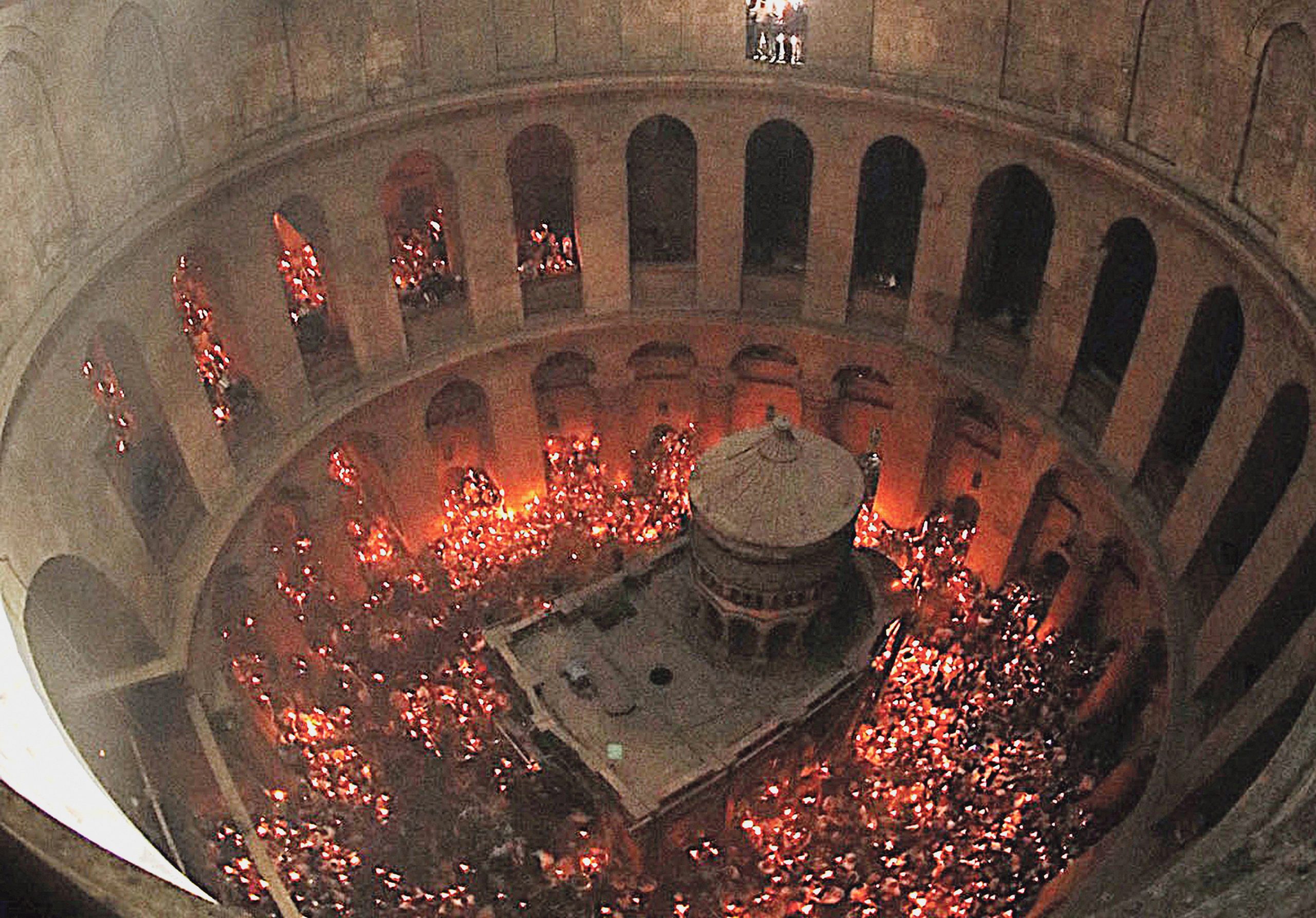New archaeological discoveries reinforce biblical account of Jesus’ tomb

In the old town of Jerusalem is the Holy Sepulcher, the one who is believed to be the place where Jesus was crucified, buried, and then rose. Now new discoveries made by an international archaeologists team may confirm this belief.
During recent excavations by Sapienza University researchers in Rome, in collaboration with the Israeli Antiquities Authority, botanical remains and dated sediments with scientific accuracy of the Spring of the Year 33 AD were found – a date that coincides with the period pointed out by many scholars as the death of Christ.
This discovery gives a new weight to a passage of the Gospel of John, which states: “In the place where Jesus had been crucified, there was a garden, and in the garden, a new tomb” (John 19:41).
About two thousand years ago it is possible that there were olive trees and vines growing on the ground where today is the Church of the Holy Sepulcher in Jerusalem. « The Gospel mentions a green area between Calvary and the tomb, and we have identified these cultivated fields, » said chief archaeologist Romana Stasolla, who has been running the current excavations since 2022, cited by The Times of Israel.
In addition to the botanical and geological discoveries, the researchers also discovered marble tombs in the church complex that may be linked to Joseph of Arimaia, the biblical figure believed to have gifted the tomb to Jesus.
“We are doing geological analyzes to verify the origin of marble and also test the mortar. Both tests can give us important information, the archaeologist told New York Post . « The true treasure we are revealing is the history of the people who made this place what it is, by expressing their faith here, » he added.
On Easter Sunday, this place, built in the fourth century, becomes the center of Christendom, with liturgical rituals. Therefore, the investigators’ work had to be temporarily interrupted to keep the church accessible to the faithful during Holy Week and Easter. Archaeological research will resume at the end of the month. “We just need to excavate part of the North Corridor,” says Stasolla.
« Whether or not to believe in the historicity of the holy Sepulcher, the fact that generations of people have believed is objective. The story of this place is the story of Jerusalem and, at least from a certain moment, is the story of worship of Jesus Christ. »
Current excavations are part of a church restoration project, which began in 2019 after decades of internal conflict among the religious communities that manage the site. The restoration includes the replacement of the church floor and the realization of archaeological excavations.
The Holy Sepulcher: Meeting Space (and Tension)
The Church of the Holy Sepulcher is now shared by six Christian communities: Catholic, Greek-Orthodox, Armenia, Coptic, Syria and Abyssin. Each group has specific times and zones of worship, and even minor repairs require consensus among all – which makes excavations particularly complex.
Over the centuries, the Holy Sepulcher has undergone various cycles of destruction and restoration.
The first structure was erected in the fourth century by Constantine, the first emperor to convert to Christianity. The Church was set on fire by the Persians in the seventh century and attacked by the Caliph Al-Hakim in 1009. A significant restoration under the dominance of the Crusaders in the twelfth century gave the building its current appearance.
After Constantine’s conversion to Christianity, he sent his mother, St. Helena, to identify the sacred places of Jesus’ life in Jerusalem. Helena found out, the cross in which Jesus was crucified, and Constantine ordered a church to be built on site.
According to Stasolla, the hidden layers under the floor of the church carry us through the history of Jerusalem, since the Iron Age (1200-586 BC).
« The church is in a quarry, which is not surprising, since much of the old town of Jerusalem is in a quarry, » says the researcher. « The quarry was already active in the Iron Age. During the excavation we found ceramic, lamps and other objects of the daily life that dates from this period. »
At Jesus’ time, the old quarry was also used as a place of burial, and it is possible to find several excavated tombs in the rock, as in other areas of Jerusalem.
« As the quarry was being progressively abandoned, tombs began to be built at different levels, » he explains. « The area has several graves from that period. Constantine selected the one who would be venerated as the tomb where Jesus was buried and escaped around him, isolating him from others. »
Ancient altar discovered in a Church of the Holy Sepulcher in 2022, a team of archaeologists had already discovered one of the corridors of the Holy Sepulcher Church in Jerusalem: a medieval altar.
Archaeologists believe that the front of the stone with 2.5m by 1.5m, has already been decorated and ornate, which indicates being a medieval altar of 1149.
« You can’t see it now, but it was originally adorned with precious marble pieces, pieces of glass and pieces of small marble, » Amit Re’em, Jerusalem’s regional archaeologist, told Israel’s antiquities authority.
“It was brilliant, it was a really amazing artifact. All the eyes of the believers, the pilgrims, (were) to this object. And just above him and around him, all the priests and monks made the main liturgy of the Church. Here, on the table of this altar,” explained Amit Re’em.
Archaeologists believe that the relic in Jerusalem corresponds to the archaeological discoveries of the past and the pilgrims’ reports of the Church’s consecration by the Crusaders and the formation of his main altar in 1149.
The altar was used by the Catholic clergy to celebrate the mass until the Crusaders left Jerusalem, the investigator highlighted.
After that, it was used by the Greek Orthodox Church until it was damaged in a fire in 1808 and forgotten until recent discoveries.








